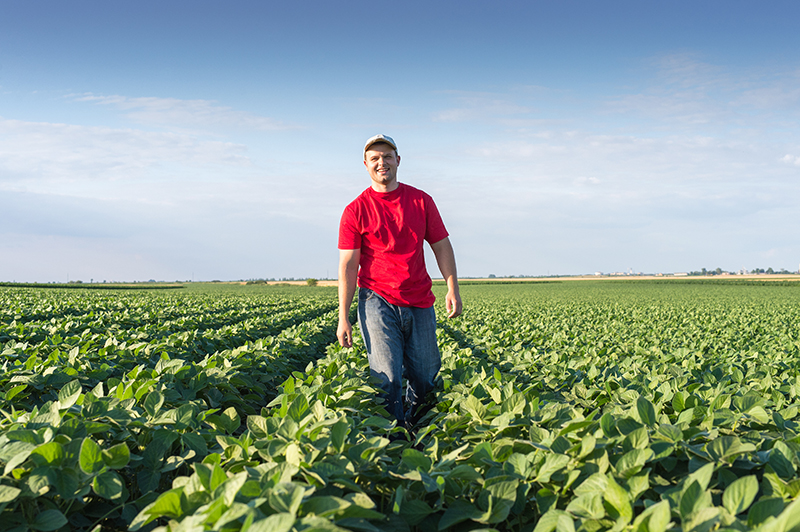Fertilizer Blending Manufacturers Optimistic Entering 2020 Application Season
For the second consecutive year, ag retailers, as a whole, have put mixers and blenders at the top of their shopping lists.
Twenty-four percent of the retailers who responded to CropLife® magazine’s annual Buying Intentions Survey in January indicate they will increase their spending this year on equipment specific to mixing and blending. Compared with seven other equipment categories, this is a survey high. Sprayers and spreaders, at 22% and 21%, respectively, are next best.
“Today blending and mixing go hand-in-hand with automation,” Todd Scobie, Sales and Marketing Manager, Murray Equipment Inc. (MEI), says. “By implementing blending/mixing equipment and automation together, retailers are seeing tremendous benefits for both themselves and their customers.
“Retailers lower overtime requirements, improve inventory management, and reduce costly errors. Growers get shorter wait-times, more accurate loads, and better billing and communication. With this type of ROI, it’s no wonder retailers are prioritizing automated blending/mixing facilities.”
Sackett-Waconia sees a continued need for upgraded blending systems, according to Director of Business Development Charles Formisani. He cites continued shrinking windows for application, which leads to requiring higher speeds, and more development in the value-added and enhanced efficiency fertilizer market, which is resulting in the need for more flexibility and precision from the blending systems.
The current challenge, nonetheless, is with a “flat ag market and limited capital to make these upgrades,” Formisani says. Still, the outlook is good at Sackett-Waconia.
“We are seeing several projects where the blending system and bulk fertilizer building may be upgraded in phases instead of all at once. We are forecasting the trend of requiring both faster, more accurate and higher flexibility in blending systems to continue. As environmental pressures increase, higher nutrient-use efficiency requirements will mean development of more technology in value-added products,” Formisani says. “The key will be in designing blending systems to have the flexibility to add these products both efficiently and quickly.”
Nate Wittmaack, President and COO of Ranco Fertiservice, says his company has been fortunate through 2019 and into 2020 to have several “very qualified” leads for blending and dry fertilizer handling systems. “The industry continues to try to ramp up infrastructure to stay competitive among peers and to meet growers’ needs and expectations,” Wittmaack says. “Ranco anticipates being busier in 2020 than the last couple of years.”
AGI Fertilizer Systems shares that optimism.
“Looking at the industry and the trends that have developed in the last 12 months, I feel that we can expect to see more retailers looking to increase operational efficiency,” Territory Sales Manager Austin Mattern says. “Retailers are wanting to decrease shrink, control their operating expenses, and serve their customers seamlessly.”
One way ag retailers can accomplish this goal, Mattern says, will be allocating funds to improve current facilities along with adding automation to existing batch, declining weight (DW), and tower blenders. Along with automation, many retrofits of existing equipment will take place, he adds, such as adding hoppers to current DW blenders and adding impregnation systems, along with powder feeders and micronutrient hoppers and bins.
Adams Fertilizer Equipment anticipates increased blending spending this year, based on late 2019 pre-orders and early 2020 blender sales. “Our forecast for 2020, if preliminary orders hold true throughout the growing season, is (up) approximately 30%,” General Manager Shawn Hudspeth says.
Pressing Issues
Current industry-wide topics of discussion revolve around speed, safety, sustainability, and retrofitting.
“I would say the single-most pressing issue is speed, and a very close second is the ability to incorporate new value-added products,” Formisani says. “Speed is driven by the challenging logistics of moving fertilizer while achieving the 4Rs in the field. This also, in many ways, leads to the use of more value-added products, which is why we see these two major issues/challenges very much coinciding.”
Murray Equipment is focusing on sustainability and safety.
“There is a lot of pressure at consumer, legislative, and community levels for responsible fertilizer and chemical handling,” Scobie says. “New facilities not only bring newer equipment and systems that are safer and compliant to the latest regulations (but), through automation, they also reduce potential employee chemical exposure, improve load accuracy, and do things such as emailing tickets, creating audit trails, and sending and receiving information from the back office electronically. For MEI customers, safety and sustainability are consistently at the top of the list when designing a new facility.”
Many ag retailers, while retrofitting older facilities and building new ones, are looking for ways to increase communications at their facilities, Mattern says.
“They are wanting accurate inventory records on dry and liquid fertilizers along with chemicals. They want accurate information for operations, and they need it attached to the work orders for seamless communication from the office to the field,” he says. “Retailers also are looking to speed up throughput with current rolling stock, more acres and tons through the same number of spreaders, sprayers, and tender trucks.”
To accomplish these asks, AGI will launch a new software package this year. AGI Manage offers a combined management strategy for dry fertilizer and liquid fertilizer facilities and has the flexibility to automate dry fertilizer equipment, liquid fertilizer equipment, chemical blending, and loading equipment, as well as seed treatment facilities. All of these equipment systems will be operated through a single software platform, making training and utilization for employees “easy,” Mattern says.
At Ranco, the end goal is succinct, Wittmaack says: “Providing the most value to the customer surpasses all marketing hype, trademarked words, and all other things. It is the core of what we should be using to make decisions. One of our forward focus points is being connected to our customers in the ways that they prefer and expect. This helps us ensure that we are focusing on what provides value to that customer, and we can emphasize that.”
Company Outlook
Adams Fertilizer Equipment — Speed, accuracy, and impregnation (liquid and dry), Hudspeth says, were proven with the Decline N Weight Blender’s six-minute trailer-tender load time with LEC technology. “Growers have experienced increased yields with micronutrients, which translated into high volumes of liquid and dry micros being added to the fertilizer blends without sacrificing blending time,” he says. “Micronutrients are controlled with LEC technology, using iPad/smart tablets, which can also communicate with their corporate environment by using Wi-Fi-compatible LEC control panels.”
AGI Fertilizer Systems — The company last year announced that it would open several new locations for service technicians to be based. “We want to decrease downtime by offering service technicians who are more locally available to our customers,” Mattern says. AGI also will be offering several service packages for dry fertilizer equipment and liquid system equipment. Customers will be able to pick the packages that work best for each location, which will offer pre-season inspections, service work, equipment training, and software training. The five base locations for service are Cedar Rapids, IA, Grand Island, NE, Marshall, IL, Salt Lake City, UT, and Joplin, MO.
Murray Equipment Inc. (MEI) — The company’s blending/manufacturing software, ICS ControlPro, is continuously adding new features, such as improved equipment management and system configuration, additional hooks back to agronomy and back-office software, and new management tools. Because of MEI’s diverse customer base, ICS ControlPro is programmed to work intuitively with single-location retailers as well as 100-plus-location retail chains, Scobie says.
Ranco Fertiservice — 2019/2020 is a “big deal” for the company, Wittmaack says. Last year Ranco expanded its Drag Chain Meter Unit technology to an 18-inch-wide version that is more appropriate for smaller bins and retrofit applications. The Series II DW blend system is a “very effective” way to move forward to DW technology for a facility that has an existing Ranco Volumetric Blender, Wittmaack says. “Our Series II bins, coupled with the 18-inch drag chains, provide much more speed capability and the consistent accuracy that Ranco DW provides.” Meanwhile, MeshDCS Technology is now available and comes standard on the Ranco DW blend systems. The technology offers the superior accuracy and speed capability that customers have “come to love about our original DW blend system,” Wittmaack says. Added features include computer control, enhanced control of external equipment, and reduced cost-of-field wiring due to the MeshDCS wireless mesh network.
Sackett-Waconia — Last year saw a continued transition from “‘bigger to be faster,’ which sometimes means giving up quality for speed, to ‘where we are heading?’ which is achieving speed, precision, quality, and flexibility without sacrificing any one of these,” Formisani says. This year, he adds, will bring continued developments in Sackett-Waconia’s blending technology, combined with a more integrated approach, with automation and specialty systems for the incorporation of value-added products. “No two locations are alike, so we will continue to focus on custom designs to meet the needs of each location,” Formisani says. “Of course, safety and worker environment are always in continuous improvement, with more stair access, reduced dust, and spillage, etc.”






